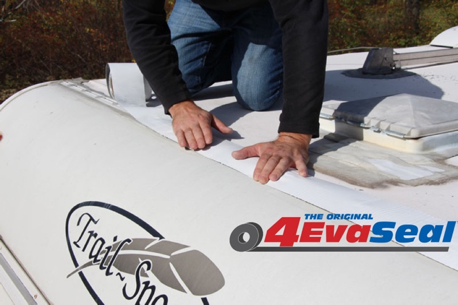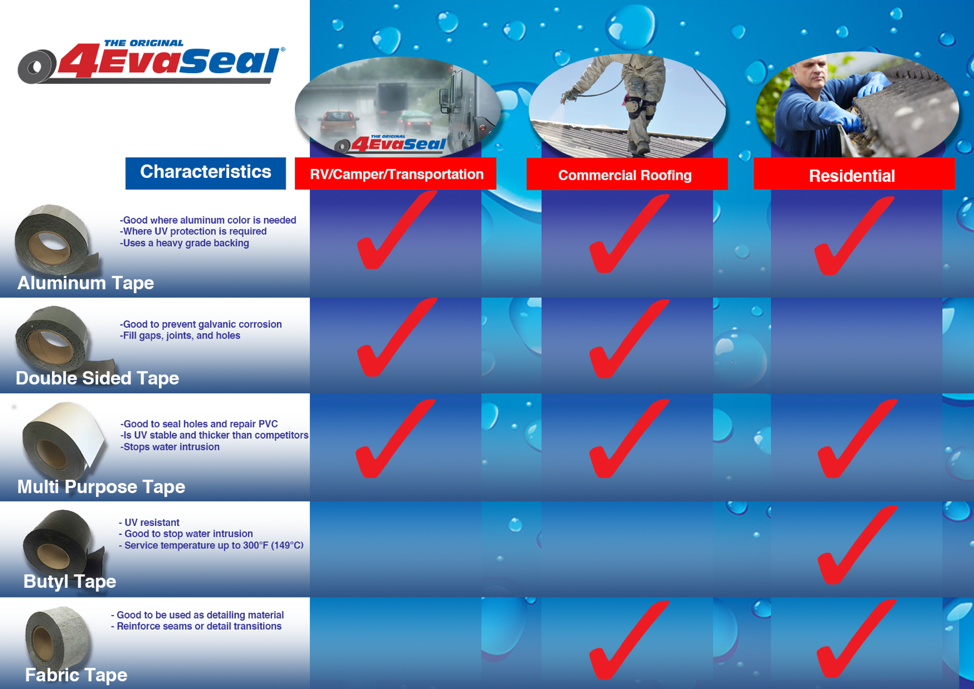 Waterproofing tapes are economical, easy to apply, and, when used properly, provide an excellent barrier to water and moisture. These products can often be used in lieu of caulking, sealants, mastics, coatings and other liquid-applied products. However, the simplicity of the application of tape products doesn’t insulate them from failures due to poor installation practices.
Waterproofing tapes are economical, easy to apply, and, when used properly, provide an excellent barrier to water and moisture. These products can often be used in lieu of caulking, sealants, mastics, coatings and other liquid-applied products. However, the simplicity of the application of tape products doesn’t insulate them from failures due to poor installation practices.
The three most common failures related to poor installation practices are
- degradation due to exposure,
- poor adhesion, and
- wrinkles and fish mouths.
Let’s explore each of these failures to better understand the cause and the steps that can be taken to prevent them.
Degradation Due to Exposure
Installing a waterproofing tape in an area it is not designed for will lead to premature degradation and failure. The most common exposures that are overlooked are
- UV,
- temperature,
- chemical, and
- movement (expansion and contraction).
Consult the manufacturer’s product data sheets to determine if the product is recommended for the exposure you intend to subject it to. If the product data sheets do not contain the information needed or if they are unclear, call the manufacturer to discuss the exposure of your application and the limits of the waterproofing material.
Poor Adhesion
Adhesion is the most critical attribute for waterproofing materials. Products that are aggressively bonded to substrates are unlikely to fail due to forces that work against the bond lines. When failure occurs due to poor adhesion, the waterproofing may show signs of delamination, peeling, and blistering.
What causes poor adhesion?
- wet and dirty surfaces
- poor contact
- uneven surfaces
- smooth surfaces
How should these conditions be corrected?
Wet and dirty surfaces – Allow the area to dry completely. Clean it using detergents and water when possible. Stained surfaces and substrates with tough-to-remove dirt can be scrubbed with abrasive pads or wire brushes or cleaned with solvent. (insert link to do’s and don’ts when cleaning with solvent).
Poor contact – Use rollers and moderate pressure when applying peel-and-stick products or self-adhesive tapes when waterproofing. Maximum contact improves bond strengths.
Uneven surfaces – These surfaces can result in poor contact areas and should be smoothed. Fill gaps with moldable sealants, caulking, or other fillers recommended by the manufacturer of your waterproofing product.
Smooth surfaces – Often manufacturers desire a slightly abraded or roughened surface to create a mechanical bond. In this case smooth surfaces should be roughened using wire brushes, sandpaper, abrasive pads, or other means recommended by the manufacturer of your waterproofing product.
How do you know if you’ve adequately prepared the surface? What if you’re unsure about a product’s ability to stick to the substrate?
Answer: Perform an adhesion test. This is always the best practice to confirm a good bond can be achieved. (insert link to blog on performing adhesion tests)
Wrinkles and Fish Mouths
These defects result in water intrusion and leaks. They can be costly mistakes as the water intrusion can cause additional damage to assets. Often both conditions are present.
A fish mouth develops when a wrinkle extends to the edge of a tape or waterproofing sheet and leaves an opening at the edge of the product. This opening is a direct pathway for water to travel under the tape and reach the spot that the user is attempting to seal.
Wrinkles that do not extend to the edge may be cosmetic but do present a weak spot in the waterproofing tape. They are vulnerable to damage and can trap air and moisture that may lead to bubbling or blistering in the future.
Take extra time with the installation and put a small amount of tension on the tape during application to pull out any wrinkles. Smooth out uneven surfaces that may create wrinkles. Place cuts in the tape to allow it to better conform to uneven areas like transitions and penetrations. Use multiple layers and proper overlapping techniques where necessary. The manufacturer of the waterproofing tape typically has drawings showing proper cuts/overlapping when dealing with common transitions.
Final thoughts
The best long-term performance is achieved by
- choosing the right tape,
- properly preparing the surface, and
- installing the waterproofing tape so it has maximum contact with the surface and is free of wrinkles, fish mouths, air pockets, and other voids.








